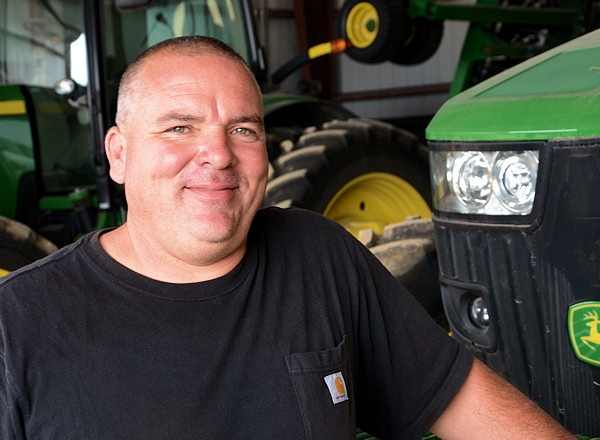August 1, 2016

Editor's note: Don't miss the video look at the Rose operation at the end of this story.
Jon Rose once grid-sampled a field by hand, meticulously laying out 100-square-foot grid blocks and collecting soil samples. This was 20 years ago in the very early days of precision farming. And while he was toying with lightbars and other tools, he wanted to get a handle on a problem.
“We had a section of a field that never produced,” Rose says. “It was a 15-acre spot that people told me never did well, and I wanted to know why.”
It�’s the challenge that got him started, and he did learn why that area didn’t produce. It was exceptionally low on nutrients and needed a significant bump in investment. The result? Rose got that poor-producing patch of ground to make a turnaround. “We fixed it,” says the Ethridge, Tenn., farmer.
Rose farms with his father, Duaine, raising corn, soybeans and wheat on more than 7,000 acres in the area. About half the soybeans are raised in a double-crop with wheat.
Rose has tried other crops in the past, including canola and popcorn, but it’s been a couple of years since he was in those business areas. Today, the focus is on the three crops, and he says he has a keep-it-simple approach to managing production.
“We want to keep it simple here, but look for ways to boost yield,” he notes. “It’s always about getting a higher yield.”
Roller-coaster ride
While his precision farming program is working now, it wasn’t always that way. His early days of gathering yield maps and working to create precision maps were giving him some benefit, but he wasn’t sure it was worth the time he invested.
“At one time I threw up my hands and got out of it,” Rose recalls. “In the 1990s we thought precision farming was the easiest thing ever; then the 2000s hit.”
More variable prices, weather and other factors kept hitting his yield, and the time needed to use precision farming was an issue, too.
“It was just too much,” he says.
Yet Rose knew he needed ways to boost productivity. So by 2008, he was back into the tech, with autoguidance and row shutoffs offering better returns. “Row shutoffs pay for themselves,” he says.
Managing that information still was a problem. His solution?
“I got a consultant who does that work for me,” Rose says. “We make sure we’re collecting good data, and they provide the prescriptions for our crops.”
And it works, but one thing that helps is his John Deere Operations Center system combined with JDLink Connect. “My consultant is in my Operations Center more than I am,” Rose jokes. “It’s so much easier now that we can just send the data directly from the machine to the cloud.”
About the Author(s)
You May Also Like






